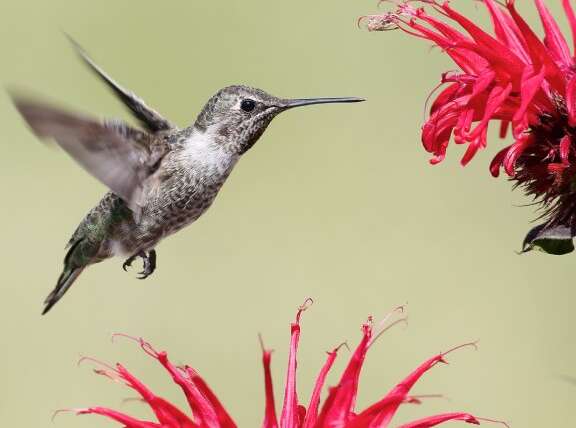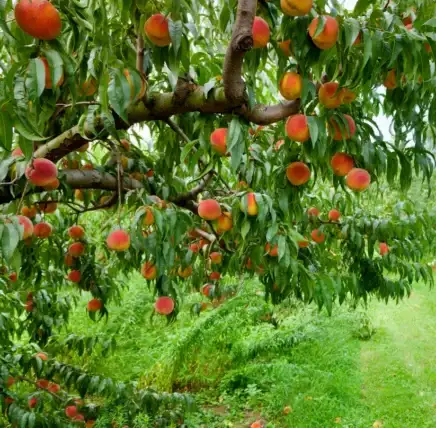Being an avid houseplant collector and a pet owner simultaneously can feel like an impossible task. Many popular houseplants are toxic to pets, creating serious concerns for curious paws and jaws. If you love your indoor garden and your pets, we’re here to help them coexist peacefully with some pet-safe houseplant tips.
Protecting houseplants from your pets, in general, is also a good idea as it limits damage to the leaves and roots while also keeping the soil in containers and off your floors. Indoor gardeners with carpets will know the struggle all too well.
These nine solutions will limit interactions between pets and toxic plants, giving you peace of mind. Depending on your pets, you may need to try a couple before you find one that works for you.
Choose Hanging Houseplants
Hanging baskets can help keep your home uncluttered and your pets safe from any potential harm.
The easiest way to keep your pets safe from toxic houseplants is to keep them out of reach. If your pets can’t interact with your houseplants at all, you remove the chances of danger.
There are many ways to keep houseplants out of reach (although admittedly far fewer for nimble cat owners). My favorite method for keeping pets safe and the space around your home free and less cluttered is hanging baskets.
Vining houseplants grow incredibly well in hanging baskets indoors, keeping them away from prying paws. Quick growers like philodendrons or pothos may require an occasional trim to keep the vines shorter and out of reach, but they are wonderfully low maintenance otherwise.
Hanging houseplants don’t always have to be in baskets, either. You can craft your own kokedama (moss ball), a technique that works well for many houseplants you may not consider planting in baskets. You could also opt for hanging air plants like tillandsia attached to a piece of wood or floating vases to root cuttings in water.
Although your houseplant options are slightly limited when you have pets around, it does allow you to get creative and use space that would typically remain empty otherwise.
Raise Pots With Shelving Or Plant Stands
 If space is tight, try tall plant stands to keep plants out of pets’ reach, or use shelves to group and display them stylishly.
If space is tight, try tall plant stands to keep plants out of pets’ reach, or use shelves to group and display them stylishly.
Hanging houseplants aren’t always an option, depending on the space that you have. Luckily, there are still ways to keep your pets (and houseplants) protected. Plus, they come with some extra design benefits that boost your houseplant display at the same time.
Taller plant stands are a stylish option and something that all houseplant owners should consider – not just those with pets. Raising your houseplants with a plant stand brings them closer to eye level, making them easier to care for and easier to see. They also keep pots off the floor, making the plants much more challenging to access for pets.
You can also install shelving to display multiple plants at once. I use both floating shelves and freestanding cabinets to display houseplants, keeping easily accessible surfaces clear. Grouping plants in this way can also improve your interior design and simplify care at the same time.
These solutions work for dogs but may not be as successful for cats, who seem to find a way to squeeze onto any tall surface. In that case, opt for glass cabinets that you can close while still allowing light in. With a few modifications, you can also add humidifiers and grow lights to grow a wider range of plants indoors, all completely protected.
Natural Repellents
 To deter pets from your houseplants, use strong-scented natural materials like citrus, coffee, vinegar, or cayenne pepper.
To deter pets from your houseplants, use strong-scented natural materials like citrus, coffee, vinegar, or cayenne pepper.
For toxic plants that remain within reach, natural repellents are your next solution. Most pets don’t like the strong aroma of citrus, coffee, vinegar, or cayenne pepper. When used correctly, they may stop any curious sniffing or chewing in its tracks.
Diluted vinegar or a citrus-like lemon juice sprayed on leaves is one application method, although it should be applied very carefully and diluted correctly to avoid leaf damage. Don’t apply any vinegar or pure lemon juice directly to the soil, as it will negatively affect root growth.
If digging in soil is a problem, try laying citrus peels around the edges of the pot or at the base of the container. Don’t water over the citrus peels or leave them too long, as they will break down over time and potentially damage the roots.
Citrus is not a strong deterrent for all pets. If you have particularly stubborn furry friends, it may even make the game of attacking your plants more exciting. In that case, coffee grounds might come to the rescue.
There are some downsides to its use (especially if applied incorrectly), but it is generally safe for houseplants in small amounts. If your pets are also more intrigued by the coffee grounds than the plant itself, it’s best to remove it completely, as coffee grounds should not be ingested in large quantities.
Unfortunately, there is a chance your pets will be completely unbothered by these repellents. In that case, opt for a few of the other solutions on this list.
Repellent Sprays
 If homemade remedies fail, consider buying pet deterrent sprays to prevent chewing.
If homemade remedies fail, consider buying pet deterrent sprays to prevent chewing.
If homemade repellents don’t quite do the job, there are specially formulated sprays you can purchase to stop your pets from chewing. These sprays are made with ingredients that aren’t harmful to your pets but also don’t taste very nice, hopefully preventing them from chewing the same things in the future.
Pet deterrent sprays aren’t usually designed for application on houseplants specifically. However, if you apply them in small amounts and test on foliage beforehand, your houseplants should be safe. And it’s a far better outcome than bite marks in the leaves and a trip to the vet.
But, a word of warning when applying any of these bitter sprays – do NOT get any on yourself. I accidentally sprayed some on my hands while trying to protect my fiddle leaf fig from two rambunctious puppies, and it was not pleasant. I was still getting occasional tastes when eating (or worse, biting my nails) for weeks afterward.
Cover The Soil
 Covering the soil with decorative stones or porous materials can dissuade pets from digging.
Covering the soil with decorative stones or porous materials can dissuade pets from digging.
For many pets, the plants themselves are not the most enticing aspect of containers. It’s the soil that’s the real star. Leaves might get caught in the crossfire, but digging in soil is what they’re really after. This is often the case for cats, but dogs that spend plenty of time indoors may also be curious.
Covering the soil removes the digging option altogether, avoiding both damage to the plant and an incredibly messy floor at the same time. Decorative stones are ideal for design purposes, but you can also try landscaping fabric or other porous materials.
Although this solution is easy to implement, it does make caring for your plants a little trickier. You’ll need to move the covering to monitor soil health and check when it’s time to water. Avoid coverings that trap too much moisture, potentially leading to root rot and mold growth.
Give Them Their Own Plants
 Consider giving them their own pet-friendly plants, like pet grass or safe herbs to chew on.
Consider giving them their own pet-friendly plants, like pet grass or safe herbs to chew on.
The saying ‘if you can’t beat them, join them’ isn’t usually applied to pets and houseplants, but I think it should be.
If houseplants are the only things your pets want to interact with, why not give them their own? This eliminates any arguments (particularly with mischievous pets) and allows them to chew on plants you know are safe.
Pet grass is the obvious choice. Great for growing in containers in front of a sunny windowsill. Several herbs and edible plants are also safe for some pets. Make sure you check the safety of the plant for your specific pet to avoid any accidents.
Training
 Consider using positive reinforcement and proper training to keep your dogs away from houseplants.
Consider using positive reinforcement and proper training to keep your dogs away from houseplants.
Dog owners who discovered this list are probably here because training has not worked. Trust me, I’ve been there.
But if you’re willing to stick it out, proper training is one of the most effective ways to keep your pets away from all your houseplants, including toxic ones. This helps your houseplants look their best and avoids possible messes, too.
Use positive reinforcement (in other words, plenty of treats) to reward your pups for avoiding any of your houseplants. Staying on top of training and reinforcements will ensure any interactions are not only avoided now but in the years to come.
Avoid Boredom
 Pets may damage houseplants out of boredom, so provide them with alternative sources of entertainment.
Pets may damage houseplants out of boredom, so provide them with alternative sources of entertainment.
Pets digging in the soil or chewing on houseplants may be doing so out of boredom. If they have nothing else to play with or little stimulation, they’ll turn to the forbidden for their fix. This is particularly tough with puppies but can be a problem for any pet.
Ensure your pets have enough entertainment to keep them distracted and away from your plants. This is easier said than done, depending on the pets you have. But it may work for some, taking the excitement out of chewing your houseplants altogether.
This can also work for outdoor pets too. When my dogs wouldn’t stop digging up my garden beds, my vet recommended building a little sandpit for them to play in without doing any damage. With a bit of training, they learned where they could dig, and I avoided any accidental uprooting. A true win-win.
Avoid Toxic Plants Altogether
 If you’re in doubt, opt for pet-safe houseplants to ensure peace of mind.
If you’re in doubt, opt for pet-safe houseplants to ensure peace of mind.
If all else fails, the safest solution is to avoid toxic houseplants in your home. While this takes many popular houseplants off the list of choices, you can’t ignore the beauty of the many houseplants that are safe for pets. For true peace of mind and minimal vet bills, this is your best bet.
Final Thoughts
Pets and houseplants don’t always mix well, but there are ways to manage your love of your houseplants and your furry friends to keep everyone safe.




